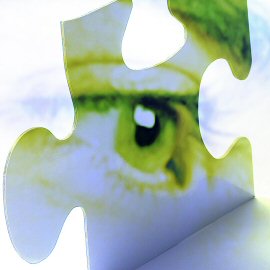6 August 2013
3D images generated from single lens
by Will Parker
 Researchers at the Harvard School of Engineering have developed a way for photographers and microscopists to create a 3D image through a single lens, without moving the camera. Detailed in the journal Optics Letters, this improbable-sounding technology relies only on computation and mathematics, rather than special lenses or hardware.
Researchers at the Harvard School of Engineering have developed a way for photographers and microscopists to create a 3D image through a single lens, without moving the camera. Detailed in the journal Optics Letters, this improbable-sounding technology relies only on computation and mathematics, rather than special lenses or hardware.
Lead researcher Kenneth B. Crozier said the method relies on computing how the image would look if it were taken from a different angle. To do this, the researchers used clues encoded within the rays of light entering the camera.
"Arriving at each pixel, the light's coming at a certain angle, and that contains important information," explains Crozier. "Cameras have been developed with all kinds of new hardware - microlens arrays and absorbing masks - that can record the direction of the light, and that allows you to do some very interesting things, such as take a picture and focus it later, or change the perspective view. That's great, but the question we asked was, can we get some of that functionality with a regular camera, without adding any extra hardware?"
The key, the researchers found, is to infer the angle of the light at each pixel, rather than directly measuring it (which standard image sensors and film would not be able to do). The team's solution is to take two images from the same camera position but focused at different depths. The slight differences between these two images provide enough information for a computer to mathematically create a brand-new image as if the camera had been moved to one side.
By stitching these two images together into an animation, amateur photographers and microscopists alike can create the impression of a stereo image without the need for expensive hardware. The researchers are calling their computational method "light-field moment imaging" - not to be confused with "light field cameras" (like the Lytro), which achieve similar effects using high-end hardware rather than computational processing.
Importantly, the technique offers a new and very accessible way to create 3D images of translucent materials, such as biological tissues. The technology also suggests an alternative way to create 3D movies for the big screen.
"When you go to a 3D movie, you can't help but move your head to try to see around the 3D image, but of course it's not going to do anything because the stereo image depends on the glasses," explains co-researcher Anthony Orth. "Using light-field moment imaging, though, we're creating the perspective-shifted images that you'd fundamentally need to make that work - and just from a regular camera. So maybe one day this will be a way to just use all of the existing cinematography hardware, and get rid of the glasses. With the right screen, you could play that back to the audience, and they could move their heads and feel like they're actually there."
Related:
Discuss this article in our forum
New imaging device is flexible, flat, transparent, and disposable
Videos reconstructed from brain scan
Holographic video transmitted via Ethernet
Cheap-and-cheerful pinhead camera doesn't need lens
Source: Harvard University
